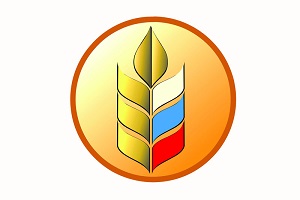The maximum rate on preferential loans in the agricultural sector may increase to 7%

The amount of subsidies for preferential loans will depend on the date of conclusion of the loan agreement and the purpose of the loan and will vary from 50% to 100% of the Central Bank key rate in effect on the date of conclusion. Thus, from January 1, 2024, it is proposed to establish subsidies for preferential loans at the level of 50% of the Central Bank key rate with a preferential lending rate of up to 7% or 70% with a preferential rate of 5%, depending on the direction of intended use, as well as the borrower’s participation in the Federal Scientific and Technical Commission.
At the same time, the draft resolution provides for the possibility of prolonging preferential short-term loans to borrowers who suffered in 2023 as a result of a natural emergency, provided that they insured at least 20% of the crops for the current year's harvest. Linking to insurance will improve the efficiency of using budget funds, and will also encourage farmers to enter into insurance contracts to mitigate the consequences of potential risks, the Ministry of Agriculture believes .
The Ministry of Economic Development previously published a draft government decree obliging recipients of a number of subsidies, including preferential loans, to introduce artificial intelligence technologies from 2024. This measure may affect companies with revenues of RUB 800 million or more. in year. Soyuzmoloko asked the Ministry of Agriculture not to oblige agricultural enterprises to implement AI technologies to receive subsidies, Kommersant writes with reference to the appeal. The introduction of AI requires investment, and agricultural enterprises are still adapting to “unfriendly actions of foreign counterparties,” replacing suppliers of equipment, machinery, materials, and IT solutions, the union explained. This is accompanied by an increase in production costs, and preferential loans and leasing help stabilize the situation.
In addition, the draft resolution developed by the Ministry of Agriculture clarifies the algorithm for forming a preferential lending plan. To do this, it is proposed to take into account the size of the acreage, the number of total livestock of farm animals, as well as the cost of agricultural products produced in the region. For the most efficient use of federal budget funds, when forming a preferential lending plan, it is also proposed to take into account the average size of subsidies actually chosen in the regions over the previous three years. “During the financial year, the Russian Ministry of Agriculture adjusts the plan taking into account the current needs of each subject, which neutralizes the risks of limiting equal access to the preferential lending mechanism,” the explanatory note clarifies.
At the beginning of July, the Ministry of Agriculture already proposed to increase the maximum rate on preferential loans from 5% to 7%. Also, under the new loan agreements, starting from 2024, it was proposed to reduce the subsidy size to 70% of the Central Bank key rate for preferential short-term loans and to 50% for preferential investment loans “for financial security of previously accepted obligations.” True, the department soon posted on the portal of draft regulatory legal acts a new version of amendments to the rules for subsidizing preferential loans, abandoning plans to increase the rate and reduce the amount of subsidies. However, it was now proposed to issue preferential loans to plant growers subject to insurance of at least 50% of the crops.
According to the preferential lending plan for 2023, by October 10, the current balance of subsidies was about 2.35 billion rubles. for short-term loans planned for issuance and 98.8 million rubles. - according to investment. The volume of subsidies for previously issued short-term loans by October 11 exceeded 70 billion rubles, for investment ones - almost 98 billion rubles, according to data from the Ministry of Agriculture, for new loans - 26.7 billion rubles. and 8.1 billion rubles. respectively.
At the end of July, Deputy Minister of Agriculture Elena Fastova said that the Ministry of Agriculture had decided to review the areas of support and highlight those that had already reached self-sufficiency and did not require preferential lending; their list was not specified. These measures are related to limited budget capacity and large obligations to subsidize previously issued preferential loans, she explained. Thus, if in 2017 the amount of loan debt within the framework of preferential investment lending was 137.9 billion rubles, then as of July 1 of this year it was over 1.5 trillion rubles. (cumulative total).
Read together with it:
- Министр сельского хозяйства предлагает долгосрочные контракты для стабилизации цен на продуктыЛут подчеркнула, что за последние десять лет рост цен на основные продукты в России не превысил общий уровень инфляции, а в некоторых категориях даже отстает от нее. Тем не менее, наблюдается устойчивый рост себестоимости продукции из-за увеличения цен на технику, энергоресурсы и логистику. Для контроля ценовой ситуации министерство сотрудничает с депутатами и рядом других ведомств. Также она упом...
- In the Republic of Karelia, thanks to federal support, rural tourism continues to develop.In recent years, agritourism has become a popular destination for those looking to spend time in nature, learn about agriculture, and enjoy local cuisine. Unlike traditional tourism, agritours offer a more in-depth immersion into local life. Tourists have the opportunity to directly participate in agricultural processes, visit farms, participate in master classes, and learn more about local cultur...
- Over the past three years, the Moscow region's agricultural machinery fleet has increased by nearly 2,500 units.Over the past three years, Moscow Region farmers have acquired approximately 2,500 units of new agricultural machinery. These include 390 tractors, 54 grain harvesters, 25 forage harvesters, and 2,000 other types of equipment. "To upgrade the technical infrastructure of our agricultural enterprises in the Moscow Region, we have created our own program: we reimburse a portion of the costs of purcha...
- Transbaikal farmers are actively implementing digital technologies in their production activities.Agricultural producers in Transbaikalia are annually increasing their use of modern technologies related to data collection, storage, and processing systems. Applications for subsidies are also being successfully submitted electronically, reported Albina Koreshkova, HEAD of the regional Ministry of Agriculture. "Every year, Transbaikalia's farms are increasingly using digital technologies to monit...
- Krasnodar farmers will receive subsidies for agricultural development.Currently, there are 513 registered farms and approximately 16,000 private household plots in the Krasnodar Krai. They annually produce over 16,000 tons of grain, 1,500 tons of MILK, and 1,100 tons of MEAT and poultry. Since the beginning of the year, farmers have earned 2.2 billion rubles from the sale of agricultural products. The region also operates 248 greenhouses, producing 21,......



























































